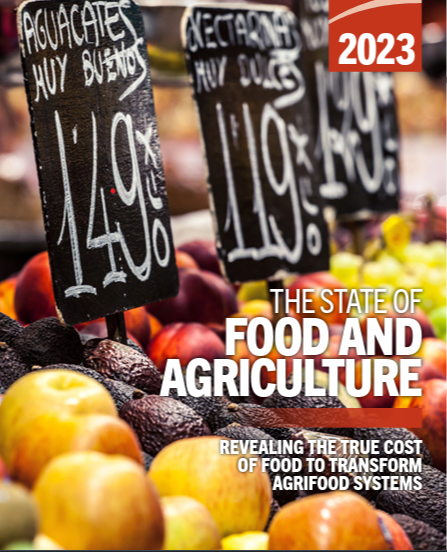I received an e-mailed news release from the UN Food and Agriculture Organization (FAO) about its latest report.
The press release headline: Hidden costs of global agrifood systems worth at least $10 trillion. 154-country study makes case for true cost accounting to guide policy.
Our current agrifood systems impose huge hidden costs on our health, the environment and society, equivalent to at least $10 trillion a year, according to a ground-breaking analysis by the Food and Agriculture Organization of the United Nations (FAO), covering 154 countries. This represents almost 10 percent of global GDP.
According to the 2023 edition of The State of Food and Agriculture (SOFA), the biggest hidden costs (more than 70 percent) are driven by unhealthy diets, high in ultra-processed foods, fats and sugars, leading to obesity and non-communicable diseases, and causing labour productivity losses. Such losses are particularly high in high- and upper-middle-income countries.
This report, FAO says, presents initial cost estimates. A report next year will focus on ways to mitigate these costs. Governments, it says, “can pull different levers to adjust agrifood systems and drive better outcomes overall. Taxes, subsidies, legislation and regulation are among them.”
The FAO director says: “the future of our agrifood systems hinges on our willingness to appreciate all food producers, big or small, to acknowledge these true costs, and understand how we all contribute to them, and what actions we need to take. ”
The report urges governments to use true cost accounting to address the climate crisis, poverty, inequality and food security.
True cost accounting (TCA), according to the report is:
A holistic and systemic approach to measuring and valuing the environmental, social, health and economic costs and benefits generated by agrifood systems to facilitate improved decisions by policymakers, businesses, farmers, investors and consumers.43
Translated, this means trying to assign numbers to the externalized and hidden costs of food production and consumption, meaning not just what you pay at the cash register but also the costs you pay in other ways for health care, animal welfare, biodiversity, polluted water and soil, and climate change.
These, says this report, add up to about $12.7 trillion a year.
The idea is to get food producers to pay their fair share of these costs—issues of accounting and accountability (according to the Scientific Group of the UN Food Systems Summit).
The report comes with a big collection of resources:
Read the background papers:
That should be plenty to keep us all busy for quite a while. Enjoy and ponder.
